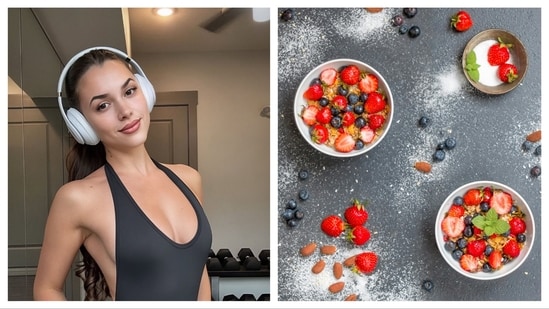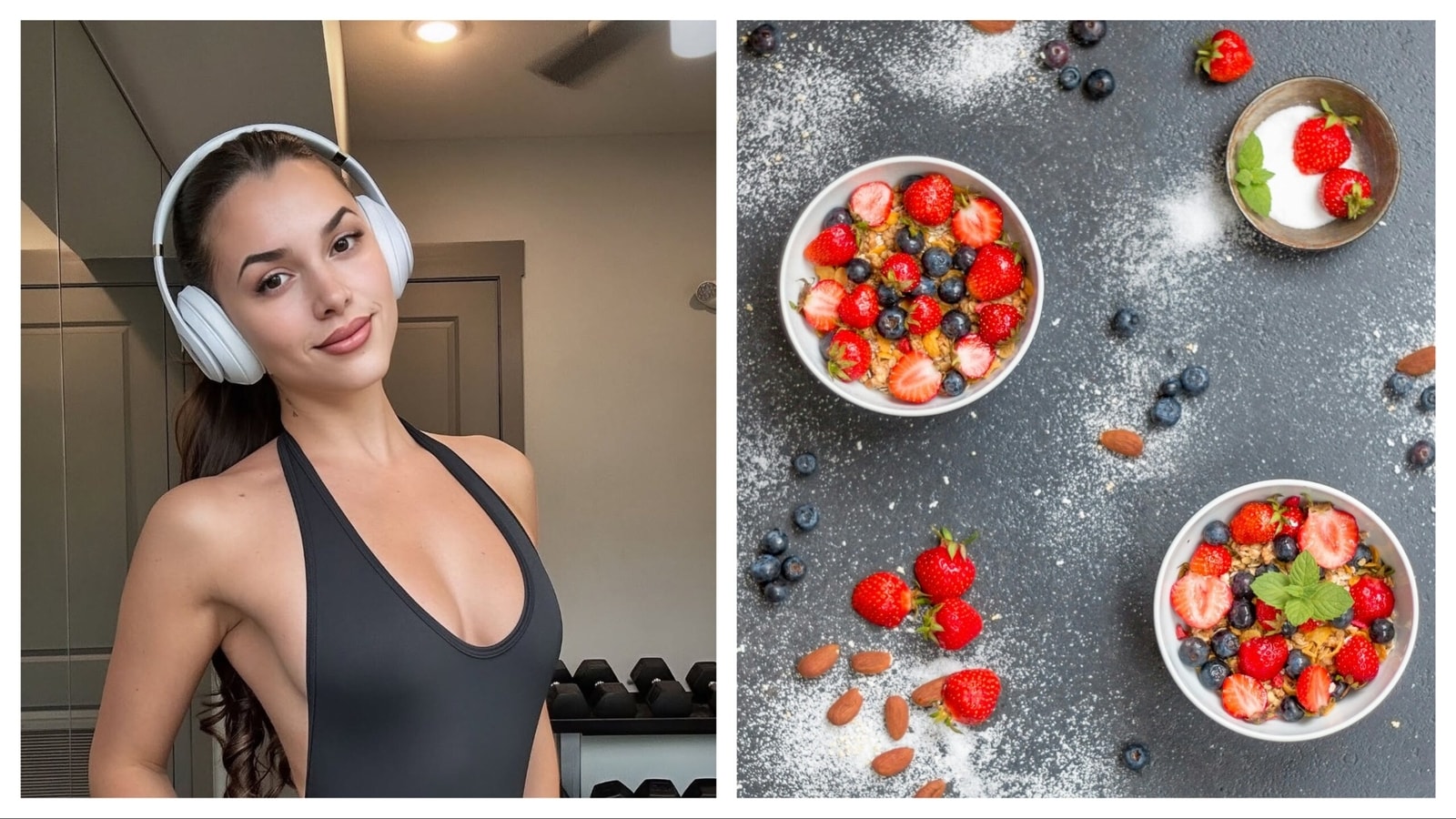Staying in a calorie deficit is the toughest challenge for anyone who loves to munch on something or the other all day. Just how do you expect someone to stay in 1500-calories range when all they can think of is the next thing they will eat? Worry not, there are ways to keep yourself satiated even when dieting.
 Nutritionist Mari Nunes emphasizes eating low-calorie, high-volume foods like fruits, fish, and certain vegetables to stay satisfied without exceeding calorie limits. (PC: instagram.com/marinunesnutrition/)
Nutritionist Mari Nunes emphasizes eating low-calorie, high-volume foods like fruits, fish, and certain vegetables to stay satisfied without exceeding calorie limits. (PC: instagram.com/marinunesnutrition/)
Nutritionist Mari Nunes shared her secret on ‘how to eat more food without gaining weight’ in a recent post on Instagram. She claims she eats the largest portions in her family but is conscious about what goes on that plate.
Mari Nunes’ tips on eating right
“I eat two kilos of food per day in a calorie deficit, which means that I’m eating little amount of calories with a lot of volume of food. Darling, I cannot eat too little. I have to chew. I have to eat a lot. Always the person in the family with a big plate. If you were to, you should be focusing on these foods that I’m about to show you because they will give you a lot of volume.”
She added, “So, you can eat a lot, you can chew a lot, you can put a lot in your plate, but you’re still going to be eating a little amount of calories. It’s going to help you calorie deficit. I can give you 2 kilos of food in the whole day with 1,000 calories. And I can give you the same amount of 2 kilos of food with 10,000 calories. The problem is not the amount of food that you eat, it’s the calories.”
She gave a list of food items in the caption of her post. Check them out:
Fruits:
Strawberries, melons, watermelons, kiwis, cherries
Strawberries are low-calorie, with about 32 calories per 100g, while melons and watermelons have around 34 and 30 calories per 100g respectively. Kiwis are slightly higher at about 41–61 calories per 100g depending on variety. Cherries are the most calorie-dense here, averaging around 63 calories per 100g.
Meats:
Shrimp, tilapia or any white fish, chicken breast, sardines, tuna (fresh or canned)
Shrimp has roughly 85–100 calories per 100g, while tilapia and other white fish average around 96 calories per 100g. Skinless chicken breast is about 110 calories per 100g. Sardines pack about 200 calories per 100g, and tuna ranges from 130 (fresh) to 190 (canned in oil) calories per 100g.
Carbs:
Beans, cold potatoes or sweet potatoes, lentils, peas, pumpkin or squash
Cooked beans have about 20–25g carbs per 100g, while cold boiled potatoes or sweet potatoes average 17–20g and 20g respectively. Cooked lentils contain around 20g carbs per 100g, and peas about 14g. Pumpkin or squash are lowest, with roughly 6–7g carbs per 100g.
Extras:
fat-free cottage cheese, fat-free Greek yogurt, Halo Top or Nick’s ice cream, veggies in general, pickles, hearts of palm, yellow mustard, egg whites, popcorn, konjac or palmini pasta, zero-calorie jello.
Note to readers: This article is for informational purposes only and not a substitute for professional medical advice. Always seek the advice of your doctor with any questions about a medical condition.

